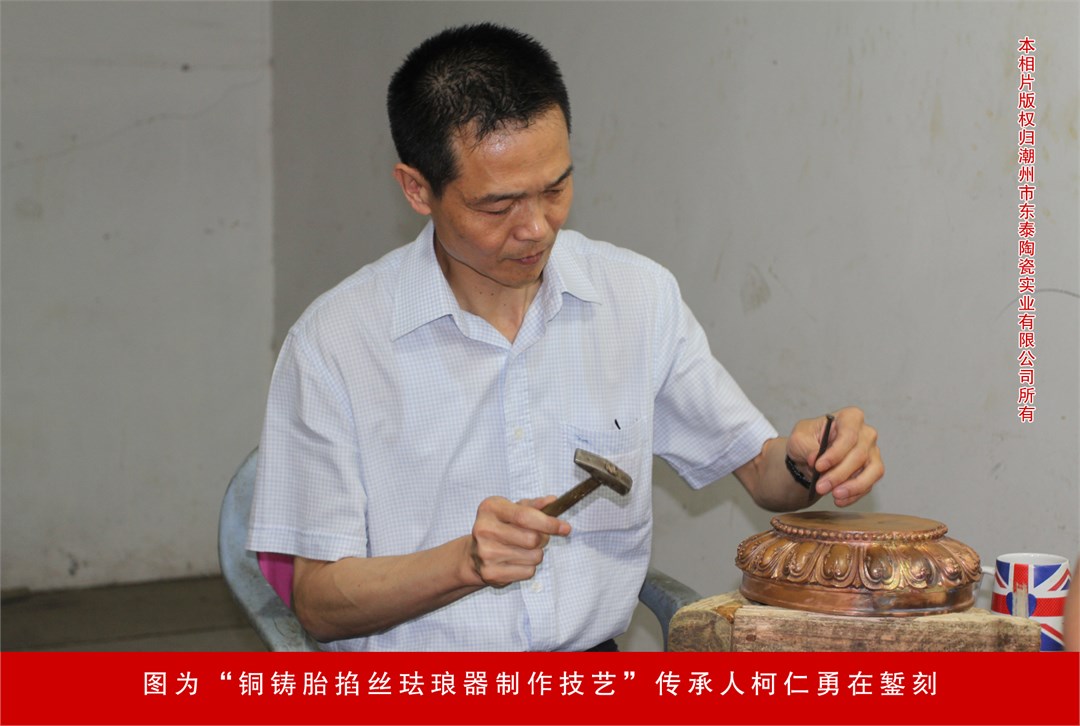In China, the long-standing art of cloisonné enamel reached its peak during the Qianlong period of the Qing Dynasty. Almost a century ago, such a technique was spread to Chaozhou following a local workshop run by Li Chuxian.
With materials like copper, zinc, tin, enamel and gold, the craftsmen make gleaming and elegant cloisonné pieces through carving, shaping, molding, casting copper framework, making metal wires, drawing on the enamel, chiseling and polishing. Since enamelware was costly, time-consuming and complicated, it was primarily used as emperors’ utensils and royal decorations in ancient times. Ordinary people could only buy cloisonné at a limited number of small-sized folk workshops operated by the descendants of the previous royal craftsmen. What they made were tailored to customers’ requirements and would be passed down as family heirlooms rarely circulated in the market. Enamel products owned by the general public were rare and often tiny in size. The most common ones were women’s headgear, hand ornaments, adornments of clothing and handed-down pieces of large families. It is worth mentioning that Chaozhou opera performers’ hair clasps and hairpins are also enamel-made. As the quality of life continues to improve due to social development, the demand for such lustrous handicrafts has increased, driving the industry’s boom.
In 2012, cloisonné enamel made the 4th batch of the intangible cultural heritage of Guangdong Province. As to the representative inheritors of the craft, the city has one master at the provincial level and one at the city level.

